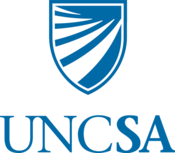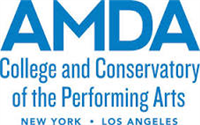What do they do?
Perform dances. May perform on stage, for broadcasting, or for video recording.
Also known as:
Ballerina, Ballet Company Member, Ballet Dancer, Ballet Soloist, Belly Dancer, Company Dancer, Dance Artist, Dancer, Latin Dancer, Performing Artist, Soloist Dancer
-
30%
Change
Select a state to see its job growth rate ranking1,900Job Openings
Select a state to see its net job growth ranking
-
University of North Carolina School of the Arts
Winston Salem, NC
-
American Musical and Dramatic Academy
New York, NY
-
The University of the Arts
Philadelphia, PA
-
Marymount Manhattan College
New York, NY
-
Point Park University
Pittsburgh, PA
Looking for colleges that offer a specific major? Use the College Match Tool to find your best-matched schools and discover your estimated Net Price!
- Doctorate or Professional Degree (<1%)
- Master's degree (4%)
- Bachelor's degree (28%)
- Associate's degree (6%)
- Some college, no degree (21%)
- High school diploma equivalent (34%)
- Less than high school diploma (5%)
Most Popular Majors that prepare Dancers
-
#1
-
Degrees Granted
2,910
-
Female Students
2,542
-
Male Students
368
-
Median Starting Salary
$38,200
-
-
#2
-
Degrees Granted
1,184
-
Female Students
797
-
Male Students
387
-
Median Starting Salary
$37,200
-
-
#3
-
Degrees Granted
83
-
Female Students
75
-
Male Students
8
-
Median Starting Salary
$38,200
-
-
#4
-
Degrees Granted
43
-
Female Students
37
-
Male Students
6
-
Median Starting Salary
$38,200
-
People in this career often know a lot about:
- Fine Arts - Knowledge of the theory and techniques required to compose, produce, and perform works of music, dance, visual arts, drama, and sculpture.
- English Language - Knowledge of the structure and content of the English language including the meaning and spelling of words, rules of composition, and grammar.
People in this career often have talent in:
- Gross Body Coordination - The ability to coordinate the movement of your arms, legs, and torso together when the whole body is in motion.
- Extent Flexibility - The ability to bend, stretch, twist, or reach with your body, arms, and/or legs.
- Dynamic Strength - The ability to exert muscle force repeatedly or continuously over time. This involves muscular endurance and resistance to muscle fatigue.
- Stamina - The ability to exert yourself physically over long periods of time without getting winded or out of breath.
- Trunk Strength - The ability to use your abdominal and lower back muscles to support part of the body repeatedly or continuously over time without "giving out" or fatiguing.
- Gross Body Equilibrium - The ability to keep or regain your body balance or stay upright when in an unstable position.
- Multilimb Coordination - The ability to coordinate two or more limbs (for example, two arms, two legs, or one leg and one arm) while sitting, standing, or lying down. It does not involve performing the activities while the whole body is in motion.
- Static Strength - The ability to exert maximum muscle force to lift, push, pull, or carry objects.
- Dynamic Flexibility - The ability to quickly and repeatedly bend, stretch, twist, or reach out with your body, arms, and/or legs.
- Oral Comprehension - The ability to listen to and understand information and ideas presented through spoken words and sentences.
People in this career often do these activities:
- Sew clothing or other articles.
- Repair textiles or apparel.
- Practice athletic or artistic skills.
- Perform dances.
- Entertain public with comedic or dramatic performances.
- Audition for roles.
- Monitor current trends.
- Train others on performance techniques.
- Choreograph dances.
This page includes data from:

 Occupation statistics: USDOL U.S. Bureau of Labor Statistics Occupational Employment Statistics
Occupation statistics: USDOL U.S. Bureau of Labor Statistics Occupational Employment Statistics









